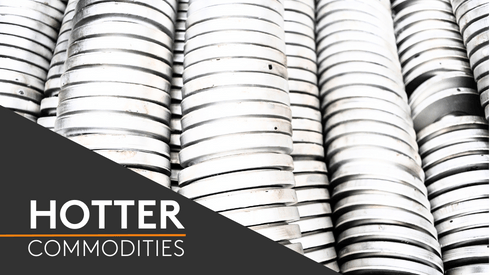The domestic construction industry in the United States already uses what many consider to be the greenest steel in the world, giving steel producers little incentive to invest more in green steel technologies.
Virtually all rebar in the United States is produced in electric-arc furnaces (EAF), “so we do have a [carbon] footprint that is the smallest of any commodity producer in steelmaking rebar anywhere in the world,” Eric Stuart, vice president of energy, environment and infrastructure policy at the Steel Manufacturing Association (SMA), told Fastmarkets.
“US-produced rebar is the greenest steel available, period,” SMA’s director of external communications and public affairs Annie Stefanec said. “It’s made [almost entirely] of recycled content, and I don’t know how you get better than that.”
Pinakin Chaubal, ArcelorMittal’s vice president and chief technology officer, told Fastmarkets the company is seeing increased interest in greener steel from the construction sector, but it remains to be seen whether those end users will be willing to accept the costs to make that happen. Read our exclusive report ‘The true price of green steel’ to learn more about the potential cost of going green.
Construction companies buying US rebar “have not pursued [greener steel] because recycling the old and making it new is enough at this time,” according to a domestic rebar distributor. “They also try to catch their pollutants in bag houses or what have you. They feel they’re doing a good job.”
“You’re getting to a point now of demand destruction across the board because prices have gone up way too much,” KeyBanc Capital Markets equity research analyst Phil Gibbs told Fastmarkets. “People may have ideals, but if they cost 50% more to do it, no.”
Further push may require policy changes
Most US steel companies could do more in terms of green certifications, carbon recapture or advanced technologies, but as long as the US construction industry has a lower carbon footprint than other regions worldwide, there is little motivation to make those investments, according to some experts.
“You lead by actions, not semantics, and the actions here [in the United States] have been a steady migration for a long period into mini-mill technology, which tend to have a lower touch on the environment and a more renewable bent,” Gibbs said. “Whereas in Europe, it’s definitely more balanced [between blast furnaces and electric-arc furnaces].”
“If [fully] green steel, reasonably speaking, is practically unattainable without massive investments and time, and the companies in this country are getting the lowest greenhouse gas produced steel in the world, what do they have to worry about?” Gibbs added. “There’s nothing on their conscience, so I don’t see a lot of changes coming in terms of steel. I think it’s sort of holding its own on the construction side.”
Indeed, the American Institute of Steel Construction’s fabricator members have shown little interest in going greener, and are primarily focused on price, according to Max Puchtel, the group’s director of government relations and sustainability. Any pressure to move forward comes from professional groups such as architects and engineers, as well as regulation, he said.
“End users want green if the government requires it, but most of them don’t personally care,” the domestic rebar distributor said.
“Nothing is forcing contractors to buy more green or sustainable steel,” Stefanec said. “[People are] less focused on the sustainability of the steel and more on making the building more energy efficient. And that’s a missing piece we can address.”
What might a greener future look like for construction steels?
With domestic construction steel already produced in EAFs using primarily recycled material, the next steps for producers might focus on ingredient transparency, efficient electricity and designing projects with future reuse in mind, according to some experts.
“The biggest industry trend is around the idea of transparency about what’s in the product, both chemical components and embodied carbon – what energy went into it,” according to Shawn Hesse, director of business development at the International Living Future Institute, a sustainability nonprofit. “Across the board, these are being pretty regularly asked of manufacturers now, which is a pretty big shift, and as more and more organizations ask these questions, that transforms the industry.”
EAFs are highly electric-dependent, with upwards of 75% of their embodied carbon – emissions associated with material and construction processes – coming from electricity use, Puchtel said.
“The numbers are based on the inherent greenness of the energy grid when used by steelmakers,” he said. “To the extent that the US grid continues to get greener, which it will under Biden’s plan and hopefully others going forward, steelmakers will see the effect of that.”
Puchtel sees adaptive reuse – retrofitting old buildings or reusing their parts – as another growing construction trend. Steel’s durability and reusable nature make it an ideal material for this process, he said.
“That plays very strongly on a sustainability front, because the greenest building is one that already exists, and the second greenest is made from parts of another building,” Puchtel said. “Steel is extremely well-positioned to aid in that, more so than other products.”
An increase in adaptive reuse would not negatively impact producers making new steel, Puchtel added.
“Adaptive reuse is not only about reusing, but designing a new project to be suitable for reuse,” he said. “Structural engineers [would increasingly] choose adaptable material, and steel is the best suited to make it happen.”
Mark Shenk in New York contributed to this report.




